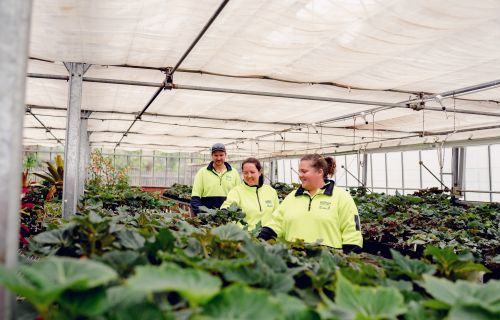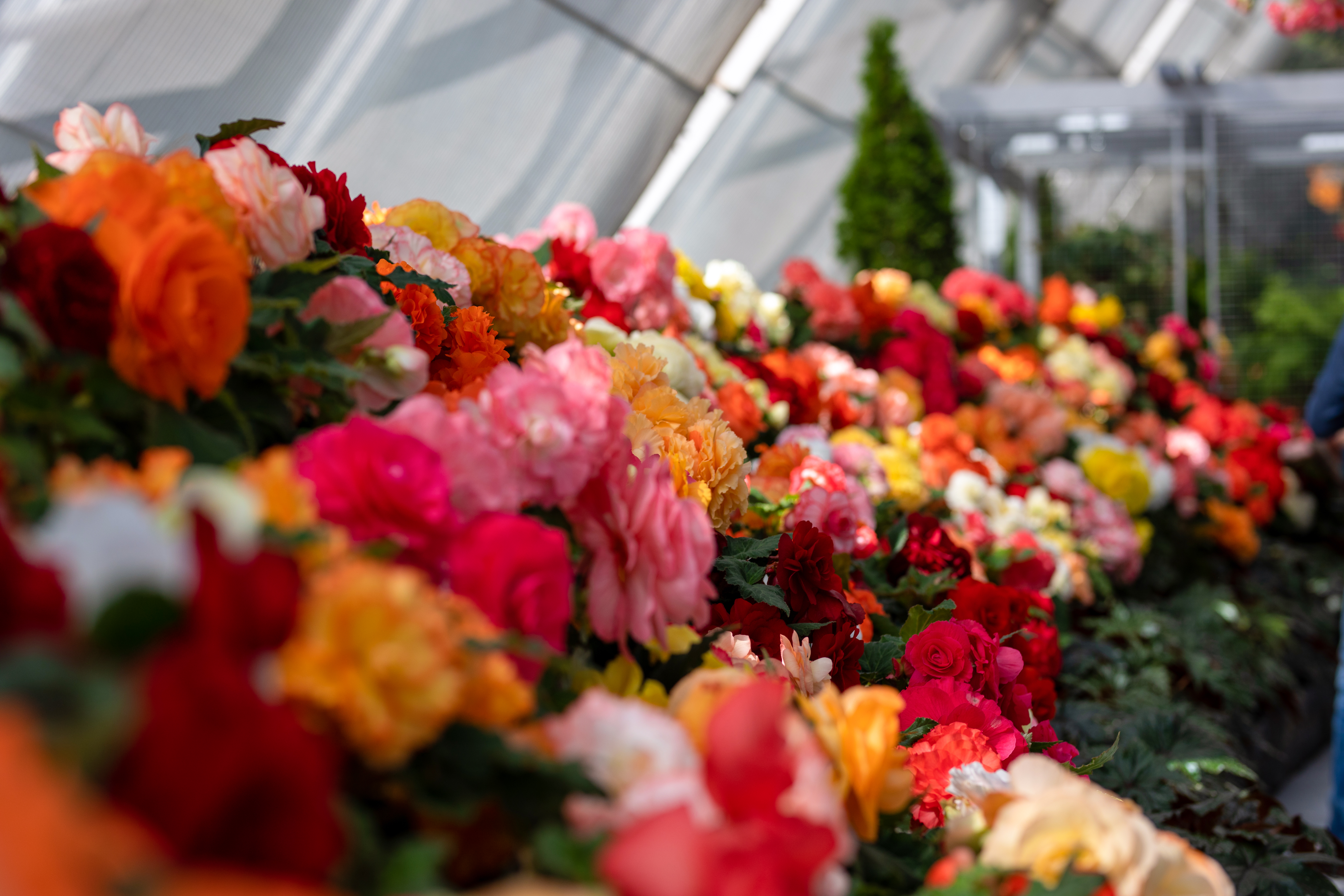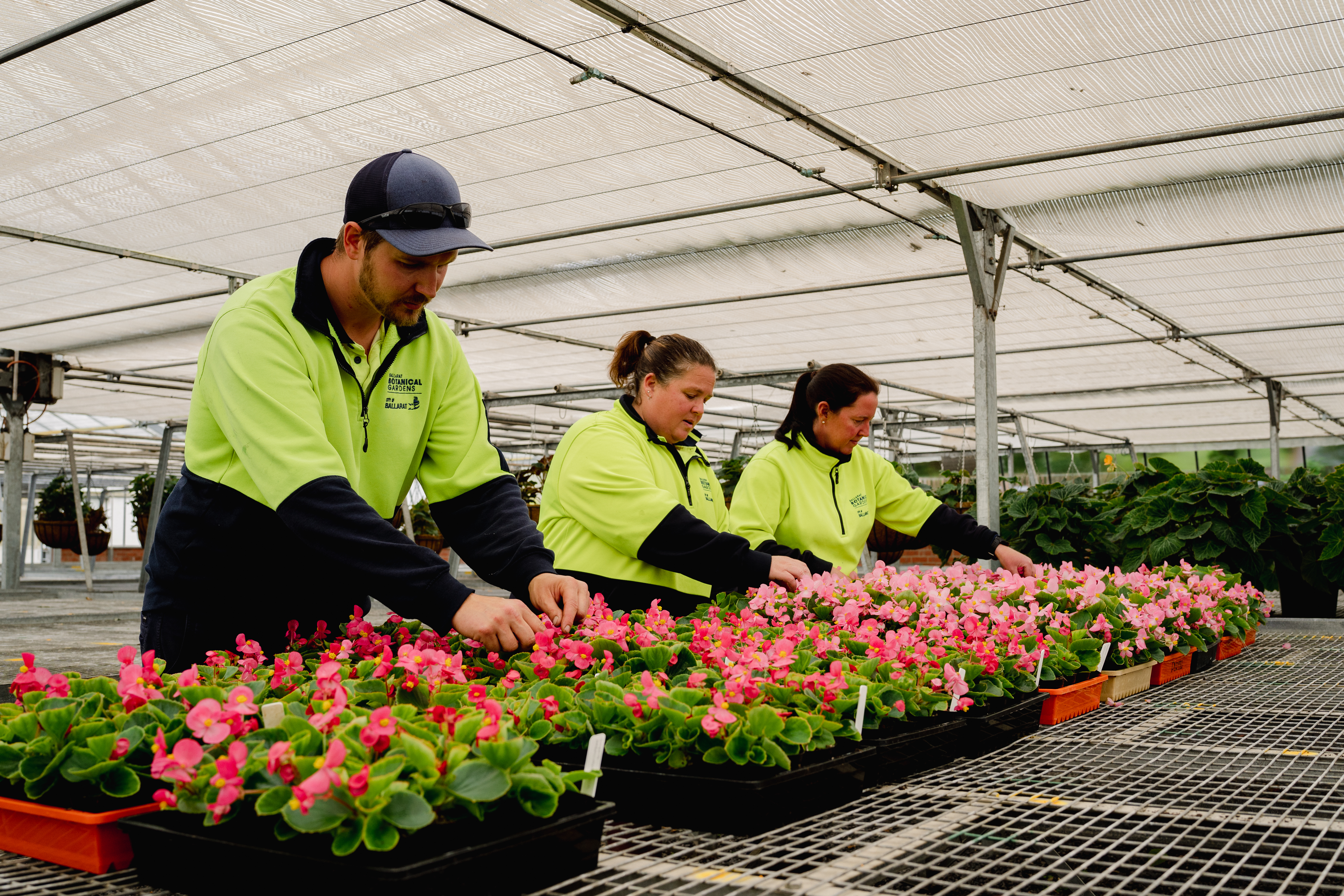Growing a love of Begonias | ourballarat autumn 2023
Since it was first launched in 1953, the Ballarat Begonia Festival has become one of Australia’s oldest and much loved free community events. The City of Ballarat’s nursery gardeners work year round to cultivate and curate our beautiful and rare begonias for the city’s annual celebration of flowers.

Each year, thousands of people flock to the Ballarat Botanical Gardens to view the dazzling display of hundreds of colourful tuberous begonias in the Robert Clark Conservatory.
The bright floral display is the result of 12 months of work from City of Ballarat gardeners and qualified horticulturists Sheree Blood, Erin Brennan and Mark Oliver.
The trio dedicate their working days to caring for our collection of begonias, which are an historical and significant part of Ballarat’s identity.
Sheree, who has worked with Erin at the gardens for 22 years, says it’s rewarding work.
“We get to work with beautiful plants, put them together and produce these beautiful displays that bring joy to so many people,” she says.
“It’s pretty special to see people’s reaction to the flowers and great to see how much they appreciate them.”

Rare Collections
The Ballarat Botanical Gardens’ begonia collections began in the 1890s.
Parks and Nursery Curator Donna Thomas says the gardens began importing tuberous begonias from English nursery Blackmore & Langdon in 1901, which considers 75 of our begonias rare, with some believed to be the only surviving varieties left world-wide.
“The other half of our collection is from all over the world and with about a third from Australia, including some really beautiful Australian bred begonias,” Donna says.
The nursery’s collections of the “big, showy” tuberous begonias which grow from an underground tuber, similar to a bulb, and the non-tuberous begonias, which feature striking leaves, are registered with Plant Trust Australia.
Donna says the nursery is home to 240 different cultivars of tuberous begonias and the team strives to grow nine of each annually to sustain the collection.
“We have around 300 non-tuberous that are unique varieties of cultivars. We grow some 650 of those so we grow almost 3,000 pots of begonias in total each year,” she says.
“No-one else in Australia grows begonias to the scale that we do.”
The nursery team also cross breed begonias to create different colour combinations, sizes and scented begonias.
“From the one set of seed you can have six different colours. I think that’s amazing,” Erin says.
The team recently created the peach-coloured Peter Marquand begonia in honour of the former Parks and Nursery Curator, who retired last year after 32 years of service.

Growing Begonias
After the festival, each non-tuberous begonia is removed from its pot, cleaned with a brush and then bagged with its individual label, before being stored away for seven weeks in winter.
In spring, the begonias are then repotted and moved into the heated glass house. Once the shoots have reached 7 to 10cms, cuttings are taken for propagation.
The begonias are then potted to their final pot size and moved to the non-heated glasshouse, where they are staked.
The team disbuds flowers until the start of February to encourage the larger flowers and ensure the begonias are looking their best for the festival.
Floral Centrepiece
Mark says creating the display in the Robert Clark Conservatory is his “favourite” part of the job.
“It's pretty special to be involved in collections that date back to the late 1800s and it’s incredible to see the display completed,” he says.
Every day, before the doors to the conservatory open, the team hand water the begonias and remove their smaller female flowers.
“Begonias have male and female flowers and for each of the big showy male flowers there is often one or two smaller single female flowers underneath it that are removed,” Donna says.
“This enables the plant to put all its energy into the big flower and not into producing seed.
“Each individual stem of a begonia is staked to support the weight of the flowers and each flower head has a wire underneath it as well for extra support.”
Donna says it’s the overwhelming colour that makes begonias so special.
“The conservatory display is breathtaking," she says.
"You never get tired of it, you never get used to it and you are never, not impressed by it.”
City of Ballarat Council Plan Alignment
The projects, initiatives, and ideas in this article align with the following goals of the City of Ballarat Council Plan 2021-2025:
Goal 5
A strong and innovative economy and city